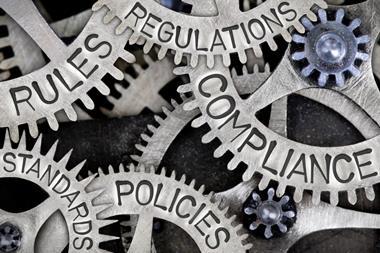The COVID-19 pandemic’s economic and social impacts are driving significant shifts in global political risk - Marsh JLT Specialty
Marsh JLT Specialty has published mid-year update to its Political Risk Map 2020, providing risk ratings for 197 countries across nine perils covering the security, trading, and investment environment from January to July 2020.
All 197 countries rated experienced an increase in their risk scores between January and July 2020, compared to 30% in the same period in 2019. The magnitude of the changes were also much greater in 2020 than in 2019. In 2019, 97% of increases were small (0.1-0.4), compared to just 7% in 2020. Further, 40% of score increases have risen between 1.0 and 1.4 so far this year.
According to the report, the COVID-19 pandemic’s economic and social impacts are driving significant shifts in global political risk — introducing new dynamics and accelerating existing geopolitical megatrends, such as trade protectionism and the transition to a multipolar world order.
The deepening Sino-American rivalry has accelerated since the onset of COVID-19. The politicisation of trade and investment relationships has extended to public health, with leaders in both countries routinely blaming the other for the pandemic.
Cooperation between China and the US on the pandemic has been weak, and tensions have risen over Hong Kong SAR, Taiwan, and the South China Sea. The expectation is that tech firms will be increasingly caught in the crossfire is playing out, while countries find themselves under geopolitical pressure to choose sides.
In July 2020, the UK government announced that Chinese firm Huawei’s technology would be banned from its 5G networks. As the US presidential election approaches, relations are likely to deteriorate further.
International focus on COVID-19 may also be masking simmering tensions between Iran and the US. Relations between the two countries remain weak, following the January 2020 US drone strike that killed a leading Iranian general.
In July, two US fighter jets approached an Iranian passenger plane in Syrian airspace, and days later Iran’s revolutionary guards fired a missile at a replica aircraft carrier in the Strait of Hormuz.
Economic storm clouds
Since January 2020, all 197 countries rated by Marsh JLT Specialty’s World Risk Review have also seen their country economic risk increase, compared to just 60 countries in the same period in 2019. Moreover, risk ratings have increased by a larger magnitude compared to the same period last year.
Between January and July 2019, 97% of the economic risk ratings that increased did so by between 0.1 and 0.4, compared to just 7% in 2020 (see Figure 1). In 2020, 40% of ratings increased by between 1 and 1.4. No scores rose by this magnitude in January-July 2019.
The International Monetary Fund (IMF) forecasts that the global economy will shrink by 4.9% in 2020. With many governments looking to ease pandemic lockdown measures, attention is focused on the shape and size of an economic recovery.
A recovery is difficult to forecast, however, given the significant uncertainty over governments’ ability to contain and manage COVID-19, particularly without a vaccine.
Recent weeks have exposed these challenges. While economic data from Europe showed a tentative move toward recovery, fears of a second wave of infections may yet undermine momentum.
As a result, the post-COVID recovery is likely to be uneven across countries and sectors. Countries that entered the crisis with weaker fundamentals are likely to face deeper economic scars, while those able to deploy large fiscal packages and effectively manage the virus are best placed for recovery.
Protests and instability
National lockdowns, curfews, and the health risks posed by COVID-19 have limited the risk of civil unrest in recent months. The pandemic’s onset largely froze existing protest movements, with the risk of disruptive protests falling in places like Chile and Hong Kong.
However, the underlying drivers of unrest in many economies — declining standards of living, inequality, and corruption — remain, and in many cases may be exacerbated by the pandemic’s economic impact.
As lockdown measures ease, some protest movements will probably resume, as new motivations for demonstrations emerge. Pre-existing tensions will be exacerbated by growing scrutiny of governments’ handling of COVID-19.
Those perceived to have failed to effectively manage the pandemic could face anti-government protests, increasing the risk of instability. There is a growing risk of disruptive protests in response to the reintroduction of containment measures, as willingness to comply with restrictions wanes. In July 2020, for example, Serbia faced a wave of unrest following government plans to reintroduce weekend curfews and criticism of the government’s handling of the crisis.
In the first half of 2020, the pandemic was accompanied in many countries by a renewed focus on racial inequality and injustice, following the death of George Floyd and others in the US, leading to a wave of protests and demonstrations.
Polling by the Kaiser Family Foundation in June 2020 estimated that as many as 26 million people participated in demonstrations in the three months to June 2020, making it the largest movement in US history.




















No comments yet